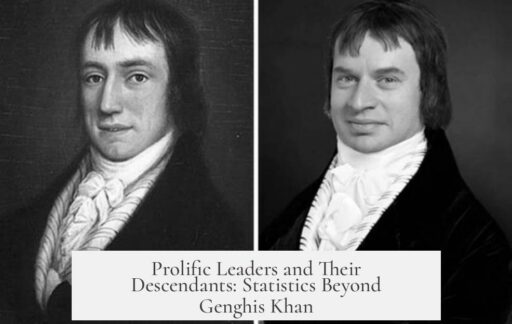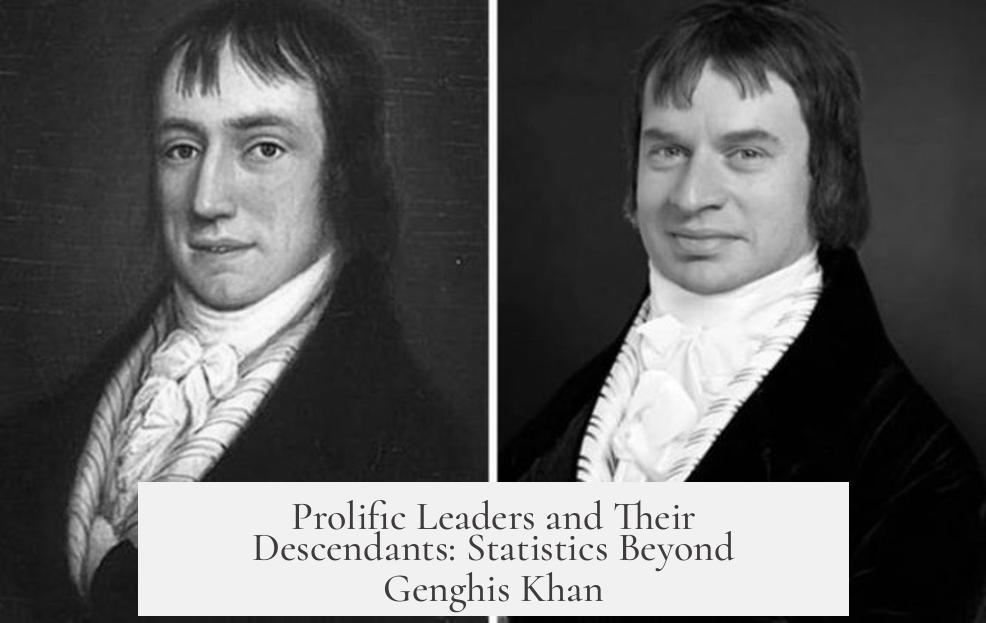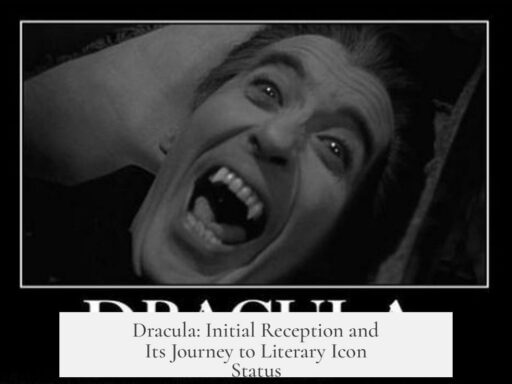Statistics exist showing that a significant portion of current populations descend from prolific historical leaders, yet the well-known claim about Genghis Khan applies only to the male lineage and its Y-chromosome lineage. Other leaders, such as Charlemagne, also have numerous living descendants, but detailed genetic studies for them are rarer.
The frequently cited figure states that about 0.5% of the male population worldwide carries a Y-chromosome that traces back to a single common ancestor, likely Genghis Khan. This statistic, however, pertains strictly to the paternal lineage, passed from father to son. The DNA signature, discovered in 2003, is found predominantly across a region that once comprised the Mongol Empire.
Because the Y-chromosome is inherited only by males along their male ancestors, the 0.5% figure underestimates the total number of people descended from Genghis Khan. Many of his descendants are connected through female lines, which do not carry the Y-chromosome. Consequently, the total proportion of the global population with any ancestral link to him is likely much higher, though no precise estimates currently exist.
Regarding other prolific leaders, Charlemagne stands out as a notable example. Research suggests that millions of people in Europe may be his descendants due to the exponential growth of lineage across more than a millennium. Unlike the Genghis Khan study, however, the genetic evidence mainly comes from genealogical records instead of Y-chromosome analysis.
Currently, no comprehensive studies have identified distinct Y-chromosome or other genetic markers definitively linked to other historical leaders as extensively as the work done for Genghis Khan.
- The 0.5% statistic relates to Genghis Khan’s male-line descendants based on Y-chromosome analysis.
- Female-line descendants are not counted in this figure, meaning his total genetic influence is broader.
- Charlemagne has many documented descendants, but genetic studies are limited compared to Genghis Khan.
- Other leaders lack specific genetic marker statistics currently.
Beyond Genghis Khan: Are There Statistics on Other Prolific Leaders’ Descendants?
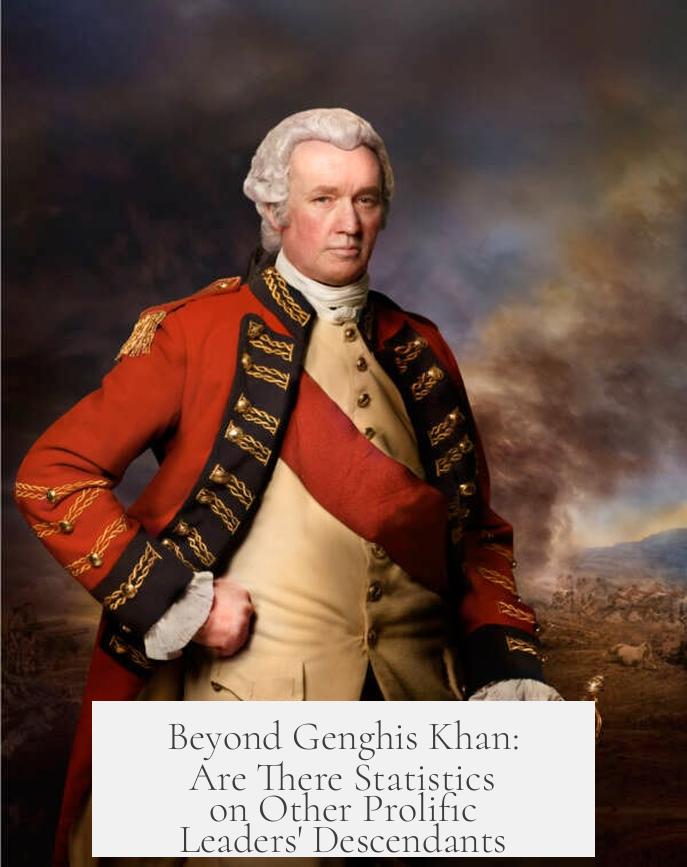
Everyone knows that about 0.5% of the male population traces a direct male-line descent to Genghis Khan. But what about other prolific leaders in history? Are there any statistics on their descendants? The answer is interesting and layered. Let’s dive into the story behind the numbers and what science reveals about these family legacies.
First, let’s clarify the famous Genghis Khan inheritance claim. It’s widely said that 0.5% of the world’s male population carries his Y-chromosome lineage. But that statistic can be misleading. The data actually show that around 0.5% of men share a particular Y-chromosome haplotype originating roughly 1,000 years ago in Central Asia. Scholars assume this points to Genghis Khan or a close male relative as the common ancestor, but his name doesn’t appear on any genetic record—after all, DNA has no “Genghis” label.
Crucially, this 0.5% concerns only the male lineage. The Y-chromosome passes strictly from father to son, so it tracks only one line out of many ancestors. Women, who do not carry Y-chromosomes, and descendants through daughters, are not counted in this figure. Given that many mixed-line descendants exist through daughters, the actual number of people related to Genghis Khan—including those through female lines—is likely much larger, though precise estimates remain unknown.
A Charlemagne Comparison: Another Prolific Leader
If Genghis Khan dominates pop history, then Charlemagne is his European counterpart in the prolific-leader-descendant stakes.
Charlemagne, King of the Franks and Emperor of the Carolingians, who lived from 742 to 814 AD, is often cited as “the father of Europe.” A fascinating Reddit response discusses here how his descendants spread across Europe. That answer is rooted in a detailed scientific paper published in PLoS Biology, which examines European genealogies and attempts to quantify bloodline dispersion.
Unlike Genghis Khan’s Y-chromosome story, Charlemagne’s spread is traced through both historical records and some genome studies. Though no single genetic marker like the Y-haplotype exists to uniquely mark Charlemagne’s lineage, genealogists estimate that a large proportion of Europeans today—possibly over 50%—descend from him when considering all lines of ancestry, not just the strictly paternal.
This illustrates a key point: as we go back many centuries, the number of ancestors grows exponentially. Each person has two parents, four grandparents, eight great-grandparents, and so on. Going back 40 generations (roughly 1,000 years), theoretically, one has over a trillion ancestor slots, far exceeding the actual historic population. This “pedigree collapse” means that many ancestors show up multiple times on family trees, elevating the chance someone like Charlemagne appears in a typical European’s lineage.
Why We Lack “Genghis-like” Genetics for Other Leaders
One may wonder, why don’t we see similar genetic footprints or statistics for other historical figures? The main reason lies in the unique combination of factors surrounding Genghis Khan:
- Polygamy and High Reproductive Success: Genghis Khan had many wives and offspring. His status allowed him to father large numbers of children who also propagated his Y-chromosome widely.
- Relatively Recent Time Frame: Being from the 13th century is recent enough for his genetic legacy to remain identifiable.
- Patterns of Male Inheritance: The Y-chromosome passes only from father to son without mixing, enabling clear detection.
Many other leaders had fewer children or lived too long ago, making their genetic legacy harder or impossible to identify distinctly. Moreover, historical events like wars, migrations, and population bottlenecks blur clear genetic signals.
Interestingly, there are no well-established studies on other prolific leaders’ unique genetic markers like those for Genghis Khan’s Y-chromosome. Although researchers look at mitochondrial DNA and autosomal DNA, these do not show simple, single-line inheritance patterns ideal for tracking famous ancestors.
What Does This Mean for Your Own Family Tree?
Are you likely related to famous leaders? Statistically, yes. Especially in Europe, the odds you descend from Charlemagne through some branch of your family tree approach near certainty due to the pedigree patterns mentioned earlier.
However, finding a confirmed genealogical link to any such figure is tough. Records were often sparse or destroyed over time. Genetic tests help, but only detect certain lines clearly. The search becomes a thrilling puzzle blending DNA, history, and detective work.
Summary Table: Genghis Khan vs. Charlemagne Genetic Footprints
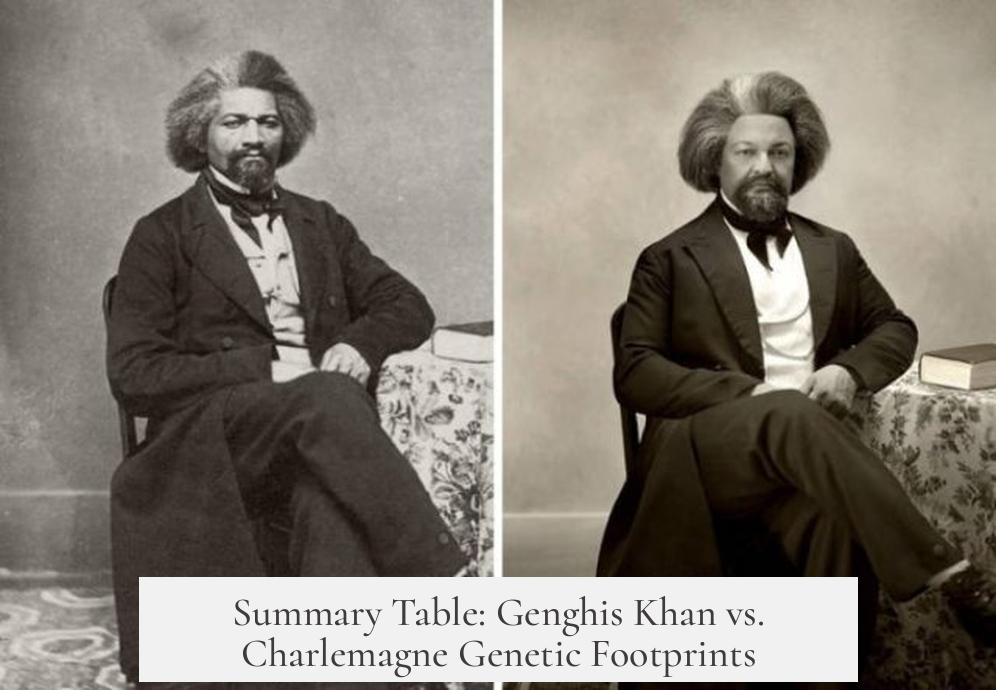
| Feature | Genghis Khan | Charlemagne |
|---|---|---|
| Time Period | 13th century (circa 1162–1227) | 8th-9th century (742–814) |
| Type of Genetic Marker | Y-chromosome haplotype | No unique Y-marker; genealogical inference |
| Population Coverage | About 0.5% of males (Y-lineage) | Likely majority Europeans through any lineage |
| Reproductive Pattern | Many children by polygamy and status | Likely many descendants through many lines |
| Available Studies | Y-haplotype studies confirmed | Historical-genealogical research; limited genetics |
Final Thoughts: The Fascinating Web of Our Ancestry
Understanding the descendants of prolific leaders like Genghis Khan and Charlemagne reveals how genetics and history intertwine. It’s not just genetics that tells the story but culture, social structure, and reproduction patterns. The famous 0.5% number is a doorway into exploring how human populations spread their heritage in complex ways.
Next time you hear about a genetic legacy, ask yourself: Are you counting only one chromosome or your full family tree? Most of us have fascinating ancestors from all walks of life, some of whom shaped history’s course in unique ways.
So, while Genghis Khan’s Y-chromosome story dazzles the spotlight, other prolific leaders like Charlemagne leave a different but equally powerful mark on the tapestry of human ancestry—one woven through countless, sprawling family trees rather than a single chromosome.
